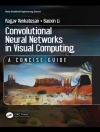Radioisotope Gauges for Industrial Process Measurements
Radioisotope Gauges for Industrial Process Measurements
In order to fully utilise nucleonic measurement principles and their applications, it is important to have an understanding of the underlying physics. Radioisotope Gauges for Industrial Process Measurements combines theoretical background with practical experience in order to present an accessible overview of the use of radioisotopes in industry. This unique book explains the modes of operation of installed gauges and presents nucleonic methods relevant to measurement problems. The first part of the book deals with radiation sources, the interaction of radiation with matter and radiation detectors. The second part explains the different measurement principles used for industrial gauges and the last part of the book covers industrial applications. This book also:
- Features a concise introduction to atomic and nuclear physics.
- Presents a range of nucleonic measurement methods and highlights their application to a variety of problems.
- Contains an overview of electronics, measurement accuracy, safety and standards.
- Considers processes and demands, design strategies and practical realisation of measurement systems.
- Provides many practical engineering examples.
Offering a comprehensive coverage of engineering applications, this book is an essential tool for electrical, electronic and instrument engineers in the oil and chemicals processing sectors. It is also a valuable reference to graduate students and physicists involved in nuclear radiation measurement, medical applications, radiochemical research, environmental monitoring and chemical engineering.
Содержание
Preface.
Symbols, Units and Abbreviations.
1. Introduction.
1.1 Ionising Radiation.
1.2 Industrial Nucleonic Measurement Systems.
1.3 Historical Perspective.
1.4 The Objective of this Book.
2. Radiation Sources.
2.1 A Primer on Atomic and Nuclear Physics Emissions.
2.2 Radioisotope Sources.
2.3 Other Radiation Sources.
2.4 Sealed Radioisotope Sources versus X-ray Tubes.
3. Interaction of Ionising Radiation with Matter.
3.1 Charged Particle Interactions.
3.2 Attenuation of Ionising Photons.
3.3 The Attenuation Coefficient of Ionising Photons.
3.4 Attenuation Coefficients of Compounds and Mixtures.
3.5 Broad Beam Attenuation.
3.6 Neutron Interactions.
3.7 Effective Atomic Number.
3.8 Secondary Electrons.
4. Radiation Detectors.
4.1 Principle of Operation.
4.2 Detector Response and Spectrum Interpretation.
4.3 Purposes and Properties of Detector Systems.
4.4 Gaseous Detectors.
4.5 Semiconductor Detectors.
4.6 Scintillation Detectors.
4.7 Position Sensitive Detectors.
4.8 Thermoelectric Coolers.
4.9 Stopping Efficiency and Radiation Windows.
4.10 Neutron Detectors.
5. Radiation Measurement.
5.1 Read-Out Electronics.
5.2 Data Processing Electronics and Methods.
5.3 Measurement Accuracy.
5.4 Optimising Measurement Conditions.
5.5 Measurement Modalities.
6. Safety, Standards and Calibration.
6.1 Classification of Industrial Radioisotope Gauges.
6.2 Radiological Protection.
6.3 Radiation Monitors and Survey Meters.
6.4 Radiological Protection Methods.
6.5 Transport of Radioactive Materials.
6.6 Leakage Testing of Sealed Sources.
6.7 Statutory Requirements.
6.8 Calibration and Traceability.
7. Applications.
7.1 Density Measurement.
7.2 Component Fraction Measurements.
7.3 Level and Interface.
7.4 Thickness Measurements.
7.5 Flow Measurement Techniques.
7.6 Elemental Analysis.
7.7 Imaging.
8. Engineering.
8.1 Electronic Data.
8.2 Rationale for Using Radioisotope Sources.
8.3 Density Gauge Design.
8.4 Dual Energy Density Gauge.
8.5 Monte Carlo Simulation.
Appendix A: Data.
Appendix B: Formulae Derivation and Examples.
Appendix C: References.
Index.
Об авторе
Geir Anton Johansen University of Bergen, Norway
Peter Jackson Tracerco, Cleveland, UK












